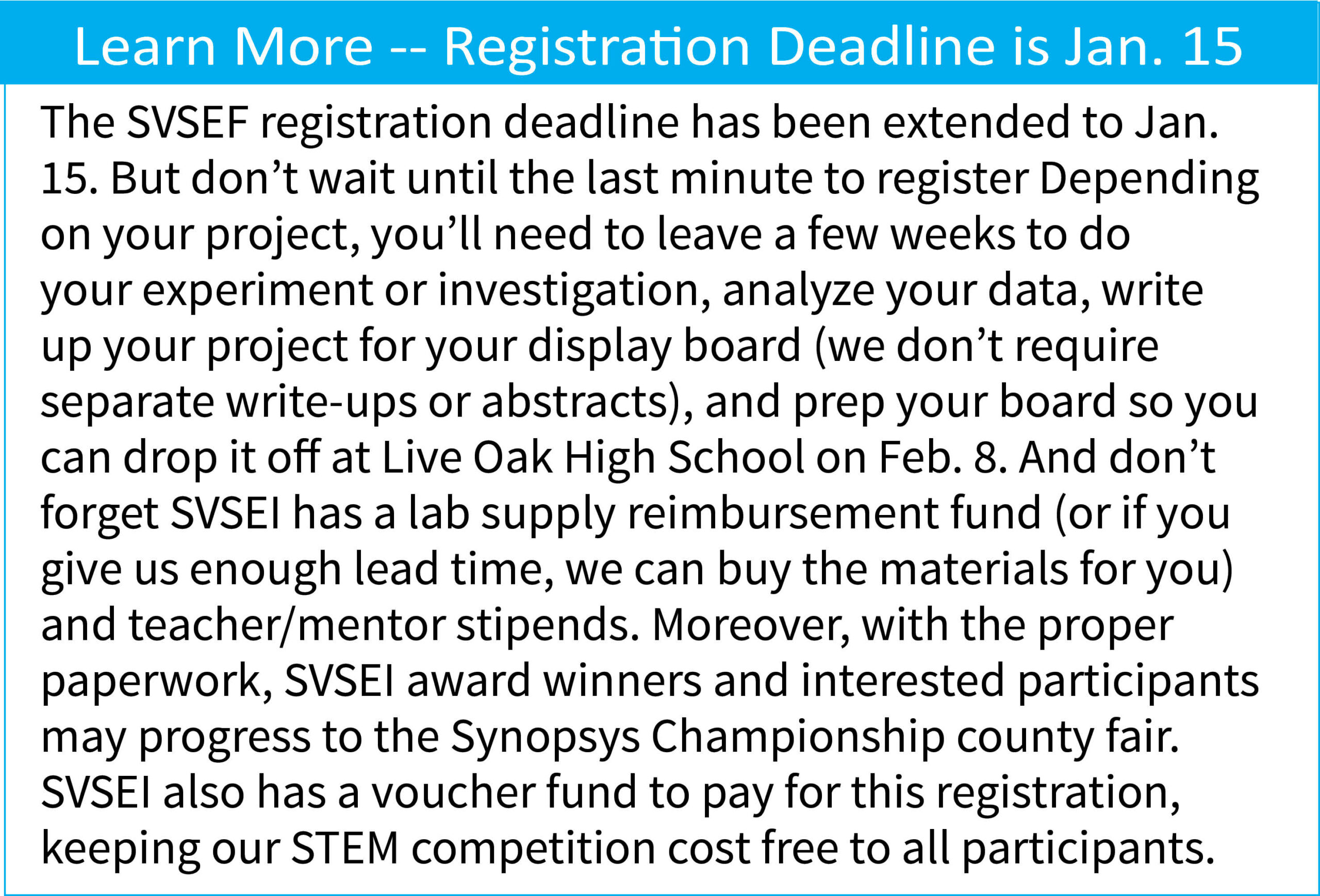Registration date extended to Jan. 15; fair will be held at Live Oak High Feb. 9
![]()

Two 2019 Science Fair participants display their project that compared visual memory to auditory memory. Photo by Marty Cheek
By Marty Cheek
The organizers of the South Valley Science and Engineering Fair want local students to have a fun and rewarding learning experience by participating in their experiment projects.
 The registration deadline to participate was extended to Jan. 15.
The registration deadline to participate was extended to Jan. 15.
SVSEF is a safe, inclusive, juried STEM (science, technology, engineering, and math) competition for all 5th-8th graders living and/or going to school in Morgan Hill, Gilroy, and San Martin. It will take place Feb. 9 at the Live Oak High School gym. At 6 p.m. the fair will open to the public to view exhibits and watch the award ceremony.
“Children want to know how the world works, to figure things out, including their place in it,” said Susan Hines, SVSEF’s director. “Doing a science and engineering project is the opposite of a ‘cookbook lab.’ We don’t know exactly how things will turn out, so we need to be observant, adaptable, analytical, and utilize out-of-the-box thinking.”
A good project is open-ended and raises more questions than answers, she said.
“Being a science fair participant or alumni reinvigorates that sense of curiosity and discovery we had as young children, as well as knowing we have the versatility to cope with change and uncertainty, which is so important in the technologically challenging world we live in,” Hines said.
SVSEF has two types of exhibits: science experiments (in the fields of biology, chemistry, and physics) and investigations (in engineering, math, and computer science.)
Judging is done per International Science and Engineering guidelines. All judges are degreed in the subject area they are judging. They are experts in their fields and use a rubric available to the students beforehand, so they know what the judges are looking for.
 SVSEF awards cash prizes for 1st, 2nd, and 3rd place in each category and grade range. It is also a feeder fair to the county competition, the Synopsys Championship. It is primarily a learning fair, Hines said.
SVSEF awards cash prizes for 1st, 2nd, and 3rd place in each category and grade range. It is also a feeder fair to the county competition, the Synopsys Championship. It is primarily a learning fair, Hines said.
“We are focused on supporting students at their level, fostering critical thinking skills, curiosity, and self-confidence, and encouraging the ethical practice of the scientific method in a respectful, gentle manner,” she said. “We want to guide them into making informed decisions.”
Doing a STEM project is one of the most authentic “real world” work that students can do, Hines said. In choosing a question or problem that interests them, students use their critical thinking skills to analyze the situation, create solutions, meet deadlines, explain their projects to experts in their fields, and are rewarded for their efforts.
Additionally, being an SVSEF participant means getting to see and be “wowed” by the work done by other students, she said.
“We want students to stay curious and be discoverers of the world around them,” Hines said.
Doing a science and engineering fair project is in alignment with Next Generation Science Standards and the state science standards, training students in disciplinary core ideas, crosscutting concepts, and science and engineering practices, she said.
“Students who participate in self-selected and guided projects can learn to fail with grace if their first approach doesn’t work, and pick themselves up figuratively,” she said. “Then they persevere, gain a sense of accomplishment that is well earned, learn to present their work confidently to experts, and become one themselves — since who knows your own work better than you?”








